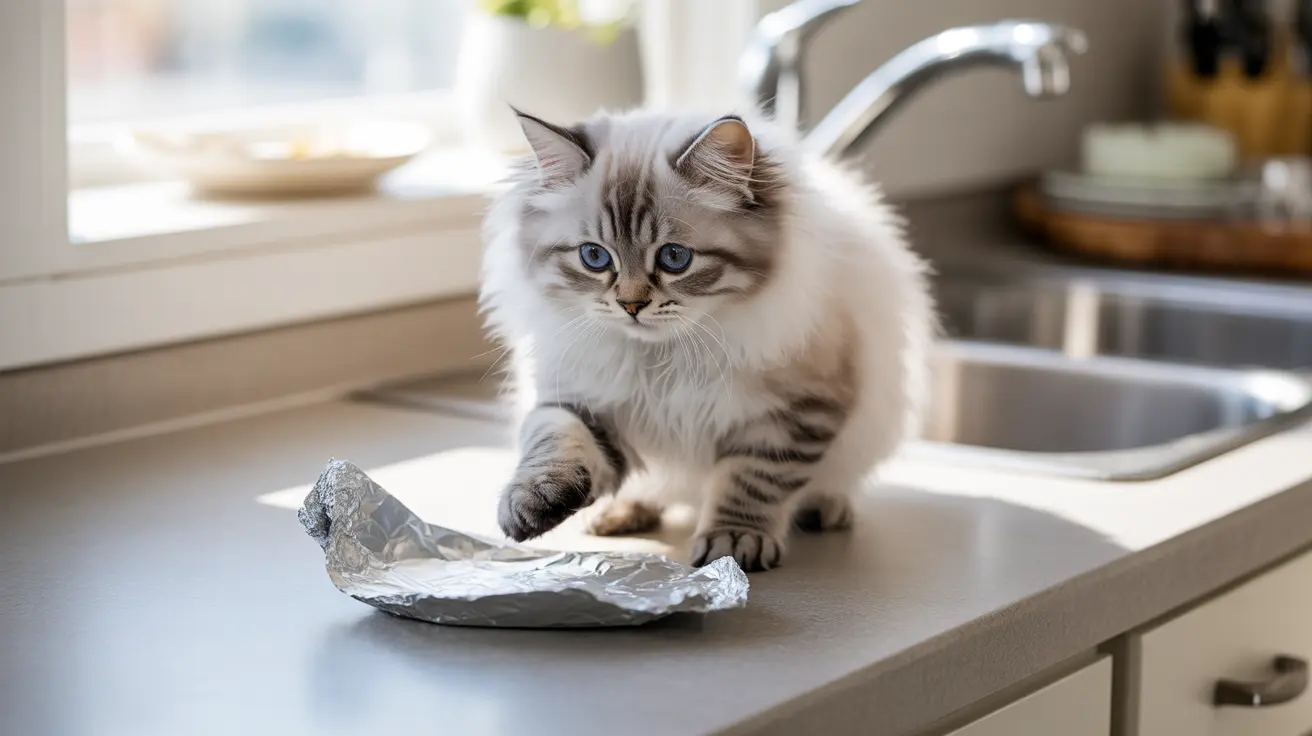Understanding Cats' Reaction to Aluminum Foil
If you've ever placed aluminum foil on your kitchen counter or furniture, you've likely witnessed your cat's dramatic response. From startled jumps to complete avoidance, most cats display a strong aversion to this common household item. But what exactly causes this peculiar behavior?
This remarkable reaction isn't just a random quirk - it's deeply rooted in cats' sophisticated sensory systems and natural instincts. Let's explore the fascinating reasons behind this common feline behavior.
The Sensory Overload: Why Cats Avoid Aluminum Foil
Sound Sensitivity
Cats possess incredibly sensitive hearing capabilities, detecting frequencies up to 65 kHz - far beyond human hearing range. The crinkling sound of aluminum foil produces ultrasonic frequencies that can be particularly jarring to cats' delicate ears. What might seem like a mild rustling sound to us could be overwhelmingly loud and distressing to our feline friends.
Tactile Discomfort
A cat's paw pads contain numerous nerve endings that help them navigate their environment safely. The unusual texture of aluminum foil - slippery, crinkly, and unstable - creates an uncomfortable sensation that most cats instinctively avoid. This tactile experience is similar to how humans might feel walking on an unstable or slippery surface.
Visual and Instinctual Factors
Reflective Surface Confusion
The reflective nature of aluminum foil can create unexpected light patterns and glares that confuse and disorient cats. Their eyes are particularly sensitive to sudden movements and light changes, making the shifting reflections on foil's surface particularly unsettling.
Natural Survival Instincts
Cats are naturally cautious of unfamiliar textures and surfaces - a survival trait that helped their ancestors avoid dangerous situations. The combination of strange texture, unpredictable sound, and visual confusion triggers their instinctive fight-or-flight response.
Using Aluminum Foil as a Deterrent
While some pet owners use aluminum foil as a deterrent to keep cats off certain surfaces, experts caution against relying on this method long-term. While it may be temporarily effective, it can cause unnecessary stress and anxiety for your cat. Instead, focus on providing appropriate alternatives and positive reinforcement training.
Impact on Cat Behavior and Well-being
Prolonged exposure to aluminum foil as a deterrent can lead to increased anxiety and potentially problematic behavioral changes. Cats may develop alternative unwanted behaviors or experience heightened stress levels. It's essential to consider more cat-friendly solutions for behavior modification.
Frequently Asked Questions
Why do cats react strongly or jump when they touch aluminum foil?
Cats jump when touching aluminum foil due to the combination of unexpected texture, startling sound, and visual confusion. Their sensitive paw pads and acute hearing make the experience particularly overwhelming, triggering an immediate startle response.
How does the sound of aluminum foil affect a cat's sensitive hearing?
Cats can hear ultrasonic frequencies up to 65 kHz, and aluminum foil creates high-pitched sounds beyond human hearing range. These unexpected ultrasonic frequencies can be uncomfortable or even painful for cats, causing them to avoid the source of the sound.
Can aluminum foil be used effectively and safely to keep cats off furniture or counters?
While aluminum foil can temporarily deter cats, it's not recommended as a long-term solution. It may cause unnecessary stress and anxiety. Instead, focus on providing appropriate alternatives like cat trees and implementing positive reinforcement training.
Why does the texture and reflective surface of aluminum foil make cats uncomfortable?
The slippery, unstable texture of foil is unsettling to cats' sensitive paw pads, while the reflective surface creates confusing light patterns that can disorient them. This combination of sensory inputs creates an uncomfortable experience most cats prefer to avoid.
Are there better alternatives than aluminum foil for deterring unwanted cat behavior?
Yes, more effective and humane alternatives include providing appropriate scratching posts, interactive toys, and elevated spaces for cats to explore. Positive reinforcement training and environmental enrichment are more successful long-term solutions for managing unwanted behaviors.
Conclusion
Understanding why cats dislike aluminum foil helps us appreciate their sophisticated sensory systems and natural instincts. While their dramatic reactions might seem amusing, it's important to respect their sensitivities and choose more positive approaches to behavior modification that enhance rather than challenge their well-being.






